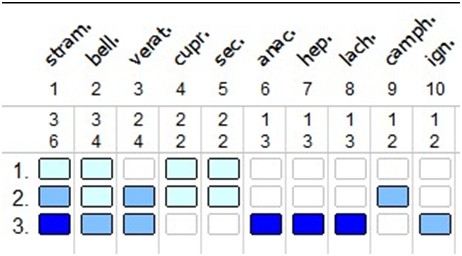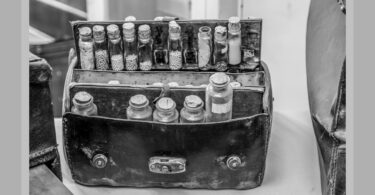The Beautiful Game’s most infamous vampire has drawn blood again: In the tense, winner-take-all Uruguay vs. Italy World Cup football match, the universally reviled striker Luis Suarez pretty clearly leaned in and took a bite of Giorgio Chiellini’s shoulder. Suarez is known for a mercurial style that sportswriters say makes him “the most beautiful player” to watch in the game. But with one chomp, star football striker Luis Suarez has gone from Uruguay’s shining light to a punchline. Let’s face it, Suarez bit Italian defender Giorgio Chiellini on Tuesday, 24th June 2014. And FIFA is making him pay, suspending him for nine matches and fining him 100,000 Swiss francs.
Suarez has been caught twice before biting his opponents. He was banned for seven matches in 2010 while playing for Ajax Amsterdam in the Dutch Eredivisie after replays showed him biting PSV Eindhoven midfielder Otman Bakkal in a league match. Last year, he was at it again when he bit Chelsea’s Branislav Ivanovic arm and was given a 10-match ban.
It’s a childish act that smacks of desperation but children usually outgrow such habits as they find other means of communicating their frustration. Is Suarez in fact the world’s tallest 2-year-old, and, if not, what could possibly explain his repeated toddler-esque behavior? From what I’ve seen in the video footage, Suarez took out his frustration and anger on Chiellini for blocking his access to the ball by reactively and impulsively biting him, It’s likely that he did not give thought to the serious repercussions of his actions, given his violent history in the sport until it was too late, at which point he acted injured. Suarez may have been acting out of frustration when he bit Chiellini, or simply trying to gain the upper hand as Uruguay battled for a place in the knockout stages of the tournament. It’s not pre-planned, it’s a very spontaneous, emotional response. It was a “primitive response” in which emotions overrode the rational thought process.
When the ball is in play, emotions drive athlete behavior much more than rational thought. Intense emotions can lead to incredible performances, but they can also lead to total bone headedness. Frustration in particular is known to lead to aggression. Certainly this is some kind of impulse-control issue. Ironically, the more we try to control our impulses under stress, the tougher it gets. So my initial thought is something this odd actually could be a result of his increased efforts at emotional control. It’s easier to remember that something like punching is unacceptable, but without another well-developed way to manage stress, some sort of odd emotional release is going to occur.
After the most recent incident, Dr. Tom Fawcett, who predicted last year that Luis Suarez would bite again told BBC News, “In Luis Suarez’s situation I’m afraid he’s got a flawed character. He’s very vulnerable to high-intense emotional situations, particularly in high level football, and he’s got an inability to control or self-regulate his responses.” The psychologist continued: “It’s an impulse response, it’s an absence of thought when he does it. It’s basically is a negative behaviour response to his anger, annoyance, frustration, irritability etc. It’s his only outlet that he has. Other players elbow people, kick people, head-butt people. Suarez is a biter.”
It is certainly not common, but instances of bizarre behavior such as this do occur periodically at the highest levels of sport; the Suarez incident brings to mind boxer Mike Tyson taking a piece out of Evander Holyfield’s ear in 1997, Tree Rollins’s 1983 NBA gnawing of Danny Ainge’s middle finger during a playoff scuffle, and Alex Burrows’s nip at Patrice Bergeron’s hand during Game 1 of the 2011 NHL Stanley Cup playoffs. Rugby players have been known to bite in the midst of scrums, when it is indeed hard for the referee to catch the human feasting.
Why bite? This is what the question is. It’s a behavior we associate usually with toddlers, not adults. Luis Suarez may be kind of repulsive, but human-on-human biting isn’t actually all that uncommon. A 2007 National Institutes of Health study found that human bites were the third most-treated kind of mammal bites in the emergency room, behind dog and cat bites, accounting for anywhere between 5-20 percent of bite cases. That’s a not-insignificant number of human bites. The study exclusively examined “occlusive bites”—the intentional teeth-on-skin aggression a la Suarez and Tyson—versus “fight bites,” which occur when a fist or arm gets punctured when it slams into someone else’s mouth.
Men are 12 times as likely to sustain biting injuries, and in nearly 90 percent of the cases—surprise—alcohol was involved, the study found.
A study published in the Proceedings of the Royal Society B sought to refute the notion that humans are bad biters, and in fact boast one of the most powerful primate jaws.
“When you actually look at the mechanics of it, the human jaw is highly efficient,” Stephen Wroe, the study’s author, told Discovery News. “For any given bite force you want, we can achieve it with much less muscle.” Our jaw, he claimed, is 40-50 percent more efficient than the great apes. “Pound for pound we’re actually biting harder than a gorilla or a chimpanzee.” Our bite strength is actually comparable to a nutcracker’s, he says.
I watched the videos of all the controversial incidents involving Suarez but could not make out if there was “tangible provocations” against him. Some people do bite as part of an anxious personality or obsessive compulsive disorder – like biting their own nails, biting off parts of their flesh and eating it especially around their fingernails but rarely bite others. According to me, he is unlikely to suffer from biting disorder, Suarez could be suffering from Intermittent Explosive Disorder which is an impulse control disorder. “Intermittent explosive disorder is provoked by arousal of fear or anger and is responded by impulsive destruction of property or aggression which is accompanied by body gestures and verbal outbursts. Intermittent explosive disorder is different from common type of anger most people exhibit from time to time when they pout, throw a book down or walk out of the room banging door, activities that are better described as mild temper tantrums. Instead of being considered a mental health problem, anger was thought to be a matter of will power. But new brain imaging studies show that the people with intermittent explosive disorder have abnormal brain signaling in areas that control anger responses. When people with rage disorder are shown pictures of people with angry faces, their amygdala lights up far more than is seen in healthy subjects. The amygdala, deep in the center of the brain, governs emotional responses to threats. At the same time, the front portion of their brain, which serves as an executive control over emotional urges, is less active than in normal people, indicating that people with Intermittent Explosive Disorder quickly lose control.
People with rage disorder often misinterpret another person’s harmless action as a personal threat and respond by slapping, hitting, biting or threatening the other person, breaking things, punching holes in walls or even try to run the person down with a car. The large numbers of assaultive acts occur in interpersonal relationships, followed by social settings, home and work.
So far we have tried to understand the psychology behind biting, now let’s try to understand it homeopathically. Even though, one must take totality into consideration while selecting a remedy for any case, let’s consider the rubrics from Murphy’s Repertory that we can take with only this picture in mind just from a learning point of view.
Just keep in mind that we have to select the most appropriate rubric, we can’t at random select all the rubrics related with biting and anger. For example, we can’t take a rubric: ‘Biting: everyone who disturbs him’, even though Chielline was disturbing Suarez by not allowing him to take the football from him. During the match, it happened a number of times that other players also disturbed Suarez but he was not biting each and every person. I agree that even in the past he did the same act a couple of times but that too two times in four years and in these 4 years he played a hundred plus matches without biting anyone. It was not a tendency for Suarez to bite, it was just an impulse that he could not control.
From Murphy’s repertory we can take following rubrics for this scenario…
And on repertorising, we get the following result:
As we can see from the repertorisation sheet above, Stramonium comes at the top- most position but if we closely watch the video, we can easily observe the red flushed face of Suarez which favours our selection for Belladonna. So, my choice for such a case would be Belladonna.
A physician must keep his eyes and ears open while selecting a remedy. Reflect on the Organon, 172-184, on one-sided disease. 182 states: “Thus the imperfect selection of the medicament, which was in this case almost inevitable owing to the too limited number of the symptoms present, serves to complete the display of the symptoms of the disease, and in this way facilitates the discovery of a second, more accurately suitable, homoeopathic medicine.”
(I will grant that Hahnemann’s 175 more often describes the reason for failure to initially find the simillimum: “Diseases with an internal main symptom that appear to be one-sided are, in fact, often not one-sided. Rather, the medical observer, due to inattentiveness, has not completely tracked down the befallments that are at hand for the completion of the outline of the disease-gestalt.”)
Let’s understand Belladonna’s rage and anger…
Belladonna stands for violence of attack and suddenness of onset. In the materia medica of Belladonna appear the following significant symptoms derived from proving trials of the remedy and from cured cases:
She attempted to bite and strike her attendants, broke into fits of laughter and gnashed her teeth. The head was hot, the face red, the look wild and fierce. He was possessed by an inclination to bite those about him and to tear everything about him to pieces. Raging, violent fury; such fury that she had to be held constantly, lest she should attack someone; and when thus held, so that she could not move, she spat continually at those about her. Visions of wolves, dogs, giants and fire; cockroaches swarming about the room; rats; snakes; worms; unclean beasts, black creatures. Sees black dogs; snakes in and around her. Everything he looks at seems red; everywhere she sees fire and conflagration.
Such ghastly visions and violent anger indicate some awful abuse in the past, experiences so horrible that they have been consigned to the Shadow, out of memory. The Shadow is our own, hidden, waste area, our rubbish dump, our forsaken realm. Yet within its confines lie riches beyond measure. Like the deadly nightshade, it is in the realising of the Shadow that we can grow spiritually with vigour and luxuriance and advance beyond the toxic, spiritually dwarfing, light of the false ego and the intellect. Even in the acute Belladonna state, with its high fever and violent symptoms, a more subtle process is at work, the releasing of repressed energy from the Shadow realm, an evolution that is further developed and fulfilled in the states of Stramonium and Hyoscyamus.
Master’s Quotes on Belladonna:
Kent started his lectures on Belladonna as “Belladonna is a remedy that takes hold of the system with great violence.”
“Where Stramonium patients may act as if pursued by a frightening beast, Belladonna individuals become enraged like a beast and can have behaviours that are animal-like. Their episodes of rage can include symptoms of grunting, grimacing, increased strength, and barking and growling like a dog. Their anger is largely directed outward toward others.” …… Vermulen’s Prisma
Sankaran in his book, ‘The Soul of Remedies’, says: The difference between Belladonna and Stramonium is that in Belladonna, the specific situation is like that of one who is about to be taken to the gallows, while in Stramonium it is like that of a person lost in a jungle. Stramonium looks for somebody to cling on to, seeking light and company, whereas the main action in Belladonna is reacting violently to save himself, e.g. desire to escape; rage.
Vithoulkas beautifully explained the anger of Belladonna in his masterpiece – ‘Materia Medica Viva’, he says, “Irritability, anger, and finally violent impulses and violent mania can be witnessed in Belladonna. Irritability is the one symptom which is consistently present even in the early stages of pathology. One very often finds a history of impatience and sudden flares of temper. These patients may literally explode with anger. There are paroxysms of anger and shouting, and a patient may say that when he is angry, “the whole building hears me shout!” The anger is such that it can bring about coughing while the face becomes extremely red. The patient becomes angry even at his own mistakes and then wants to break things. Sometimes the anger alternates with weeping in a state beyond his control. The anger is, however, equally rapidly forgotten, like a storm that rages and quickly subsides. But beware, should anyone try to give advice to a belladonna patient while in this temper, however kindly one may try, the result will be to make him mad and explode in an even worse manner.”
“The belladonna patient can become frighteningly destructive and wildly violent, wanting to strike people or bite them as previously described. There is a wildness in him, a wild look on his face, and his strength may be greatly increased. He may turn to barking and growling like a dog in his delirium.”
So, this is just a brief idea as to how we should differentiate the medicines under same rubrics and apply the exact rubric for repertorization for finding a true simillimum. We must know that there are rubrics differing in shades of meaning and it may need all our intelligence, care and contemplation to fully realize these shades of meaning.
References:
The Times of India – 25th June 2014
You-Tube videos
Murphy’s Repertory
Kent’s Lectures on Homoeopathic Materia Medica
Vermulen’s Prisma
Sankaran’s The Soul of Remedies
Vithoulkas’s Materia Medica Viva







